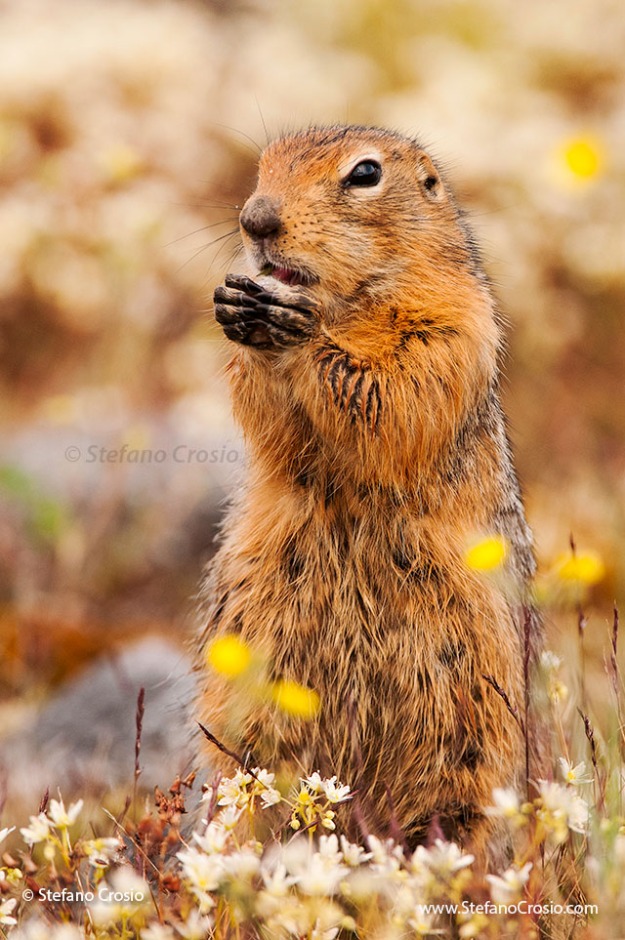
Up until a while ago, the dominating trend in wildlife photography was shooting tight, delivering images that showed the animal up close, whether they were portraits or action shots. While tight shots are by all means still relevant and utilized by photo editors, a more recent trend has been that of the so-called environmental portraits, that is photographs that show the animal not in isolation but in the broader context of the ecosystem it is a part of.
There certainly is merit in this trend, in that through such images viewers take in much more about the animal than they could from a tight shot. Viewers have a better and more visual idea of the conditions and the geography the animal lives in: in other words, they get a more complete story about the subject.
The above image of an arctic fox (Alopex lagopus) in the barren lands in proximity to the shores of the Hudson Bay (Canada) exemplifies the notion of an environmental shot. I will post in the future closer images of the same species that show the animal’s body features from up close (if you are interested, you can view a selection of them right away on my Web site), but this photograph immediately tells you what animal we are talking about as well as something about the environment it lives in and its camouflage ability.
So, if you are pulling together your wildlife photography portfolio, it is a good idea to include both tight shots and environmental portraits, so as to add some variety and tell a more compelling story about your subjects.
If you would like to see more images of mine, feel free to browse my Galleries.
As per my copyright notice, please respect my work and do not download, reproduce or use the image above without first seeking my consent. Thank you 
![]()


